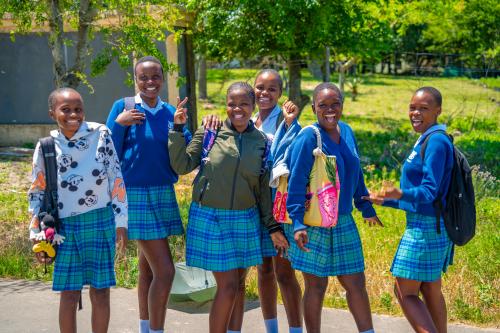In just a few short months a post-2015 Education for All agenda will be adopted in Korea at the World Education Forum, and in September the new Sustainable Development Goals will be agreed upon. Many are interested in ensuring a strong post-2015 agenda for education, but we must also ensure urgent and focused action if we are to lend a strong foundation, legitimacy, and credibility to these new and ambitious goals.
Fifteen years ago, the global community set its aspirations to reach the Education For All and Millennium Development Goals (MDGs) by 2015. Yet the new “Millennium Development Goal Two Scorecard”—the second MDG is the one focused on education— released by A World at School demonstrates that we still have some work to do, especially if we are to make it clear that the global community means business when it makes promises to children.
With less than one year remaining to achieve universal education, many countries have yet to establish strategies to achieve this goal. The MDG scorecard finds that only 13 of the 29 countries with over 500,000 out-of-school children—less than half—have a strategy to achieve the second MDG. The majority of the high-burden countries have no comprehensive action plan that includes interventions with associated costs or target dates for deliverables. This means that in the very year we are to reach our goals, not all of the sector plans financed by the international community include a vision or strategy to achieve them.
Only four of the 29 countries with more than 500,000 children out of school have achieved the recommended level of domestic education financing—20 percent of the national budget. While many countries have made pledges to increase funds, most have not been realized.
Lastly, 22 of the 29 countries in the scorecard are considered “conflict or fragile states,” with 20 alone in the conflict state category. The 2014 data also shows that only 1 percent of humanitarian funding went to education. Keeping in mind that middle-income countries, such as those impacted by the Syria crisis, are not eligible for development assistance from the current global education funding models, there is a clear gap in the existing financing architecture.
Yet it is not too late. While the scorecard shows failing marks, the commitments of donors and developing countries alike do show some success stories. We also know what works to improve the prospects of children having the basic right to go to school and learn: strong plans, donor and country coordination, trained teachers, supportive delivery systems, learning materials, and predictable, adequate financing.
As we head into the Oslo Summit for Global Education in July, which aims to improve bilateral donor coordination to establish a stronger foundation for achieving results for the most marginalized, I would like to challenge the global community. Could we achieve just three basic tasks for our children this year?
- Ensure that every off-track country has a solid strategy for universal education with timelines, targets, and realistic costing.
- Support countries to allocate domestic financing by aligning and coordinating bilateral and multilateral aid to make it possible.
- Close the financing gap for education in emergencies and fix the aid architecture so that education no longer falls through the cracks where it is needed most.
We have had 15 years since launching the MDGs. What are we waiting for?
The Brookings Institution is committed to quality, independence, and impact.
We are supported by a diverse array of funders. In line with our values and policies, each Brookings publication represents the sole views of its author(s).




Commentary
Leaving no unfinished business: What are we waiting for?
February 26, 2015